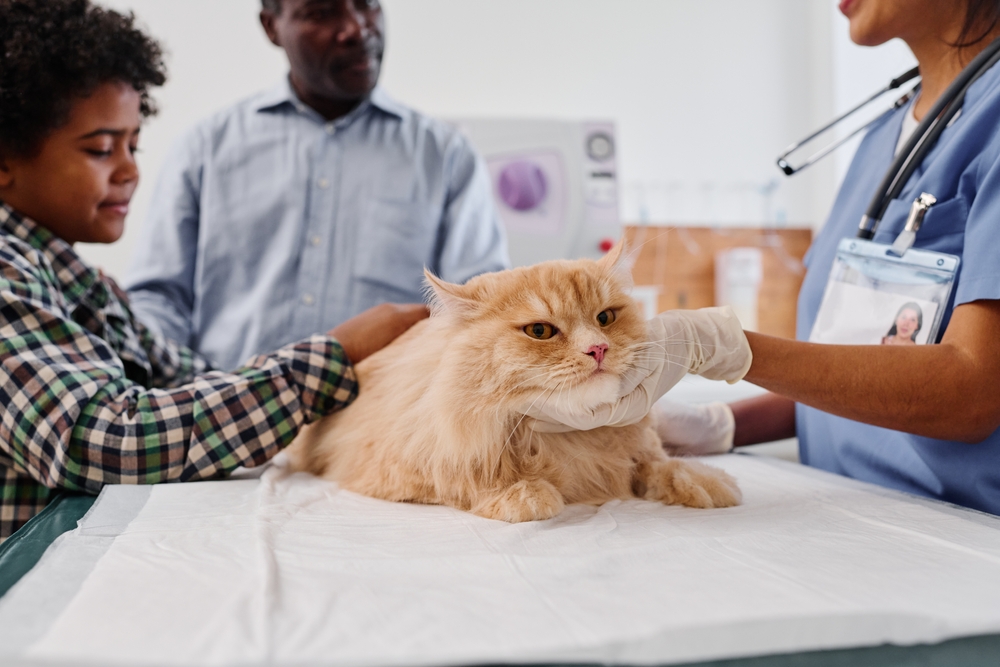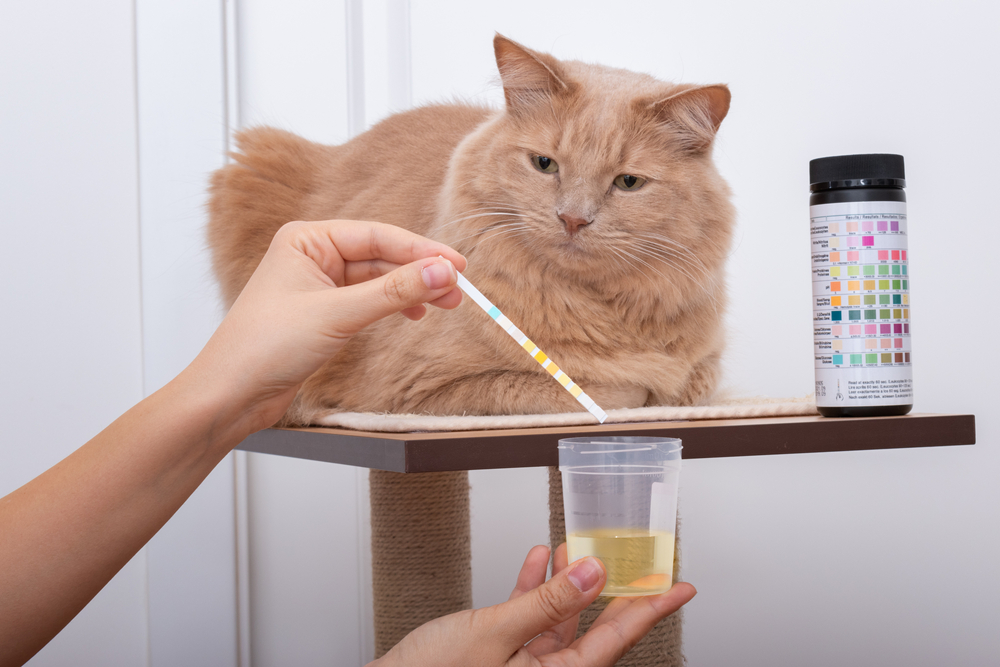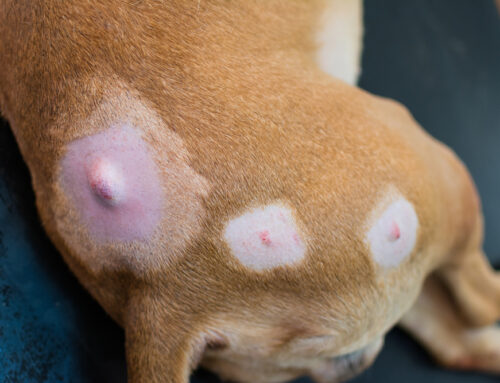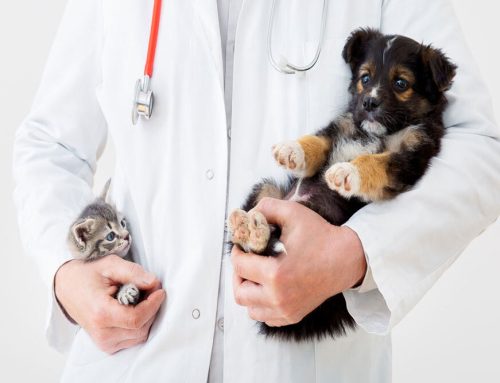Urinary tract infections (UTIs) are more than just a minor inconvenience—they can cause significant discomfort and lead to serious health complications in both dogs and cats. While antibiotics are effective in treating UTIs, prevention remains key to protecting your pet’s long-term well-being.
At Providence Vet in Virginia Beach, we believe informed pet parents are empowered pet parents. This guide covers everything you need to know: causes, symptoms, diagnosis, treatment options, and prevention strategies for UTIs in pets.
Understanding UTIs in Pets
What Is a UTI?
A urinary tract infection occurs when bacteria enter the urethra and multiply within the bladder. While both dogs and cats can be affected, UTIs are more commonly seen in female dogs. In cats, UTIs typically indicate an underlying issue such as bladder stones, stress-related cystitis, or metabolic disease.
Common Causes of UTIs
Several factors can contribute to the development of UTIs:
- Bacterial Ingress: Poor hygiene or contamination can introduce bacteria into the urinary tract.
- Incomplete Bladder Emptying: Conditions like bladder weakness or obstruction can lead to bacterial overgrowth.
- Underlying Conditions: Diabetes, kidney disease, and urinary stones all increase the risk of infection. Read more about diabetes and UTIs – AAHA
- Dehydration: Concentrated urine provides an ideal environment for bacterial growth.
- Urinary Crystals or Stones: These can cause irritation and inflammation. Learn more about urinary stones – ACVS
Symptoms of UTIs in Pets
Warning Signs to Watch For
If your pet has a UTI, they may show the following symptoms:
- Frequent urination in small amounts
- Straining or discomfort during urination
- Blood in the urine (hematuria)
- Cloudy or foul-smelling urine
- Excessive licking of the genital area
- Accidents in the house or outside the litter box
When It’s an Emergency
Seek immediate veterinary care if your pet:
- Is straining to urinate with little or no output
- Cries out in pain while urinating
- Has a firm, bloated abdomen
- Becomes lethargic or starts vomiting
- Refuses to eat or drink
In male cats, these signs may indicate a life-threatening urinary blockage. Read about urinary obstruction in male cats – ACVS
Diagnosing UTIs in Pets
Your veterinarian may perform the following tests:
- Urinalysis: Detects bacteria, crystals, blood, and pH imbalance.
- Urine Culture: Identifies the specific bacteria for targeted antibiotic treatment.
- Blood Tests: Help rule out underlying systemic diseases like kidney disease or diabetes.
- Imaging (X-rays or Ultrasound): Reveals urinary stones, tumors, or structural abnormalities.
Learn more from Cornell Veterinary’s UTI resource
Treatment Options for UTIs in Pets
Antibiotics
The mainstay of treatment, antibiotics are prescribed based on urine culture results to effectively eliminate the specific bacteria causing the infection.
Pain Management
Anti-inflammatory medications or pain relievers may be used to reduce inflammation, alleviate discomfort, and encourage normal urination.
Hydration Support
Increasing fluid intake helps flush bacteria from the urinary system:
- Offer fresh water throughout the day
- Add water to dry food or offer canned diets
- Try pet-safe broths or use a water fountain to encourage drinking
Treating Underlying Conditions
UTIs often recur unless the root cause is addressed. Common contributors include:
- Urinary Stones: Prescription diets may dissolve smaller stones, while surgery may be required for larger or obstructive stones.
Learn more about urinary stones – ACVS
- Diabetes: High glucose levels in the urine create an environment conducive to bacterial growth. Effective diabetes management is critical.
- Anatomical Abnormalities:
Dogs with a hooded vulva (a conformation where excess skin covers the vulva) are more prone to UTIs due to trapped moisture, urine, and debris.
This condition may be breed-related, influenced by obesity, or simply individual anatomy.- Keeping the area clean and dry may help, but in recurring cases, corrective surgery (vulvoplasty) may be recommended.
Preventing UTIs in Pets
Ensure Proper Hydration
- Provide clean, fresh water at all times
- Offer wet food or add water to meals
- Use pet-safe broths or a fountain to encourage more drinking
Promote Regular Bathroom Breaks
- Allow dogs outside to urinate every 4–6 hours
- Keep litter boxes clean and easily accessible for cats
Maintain Genital Hygiene
- Gently clean the genital area regularly, especially after outdoor activity or urination
- Trim excess hair around the vulva or prepuce to reduce contamination
- Avoid letting pets drag their hindquarters on soil, grass, or carpet, especially if prone to infections
Monitor for Anatomical Risk Factors
- Check for signs of recessed or hooded vulvas in female dogs
- Work with your vet on a cleaning routine or discuss surgical correction if infections persist
Consider Specialized Urinary Diets
Prescription diets can support urinary tract health by maintaining optimal pH and reducing the risk of stone formation. Always consult your veterinarian before switching foods.
Schedule Routine Veterinary Exams
- Annual checkups, including urinalysis, help detect early signs of infection
- Pets with a history of UTIs may benefit from more frequent monitoring and proactive care

How Providence Vet Can Help
At Providence Vet, we’re here to support your pet’s urinary health through:
- In-house diagnostics for fast, accurate results
- Personalized treatment and prevention plans based on your pet’s unique needs
- Preventive wellness care and tailored nutritional guidance
- Surgical consultation for pets with recurrent UTIs due to anatomical factors
Whether your pet is showing signs of infection or you’re looking to prevent the next one, our team is ready to help.
UTIs can be painful, recurring, and dangerous—but with prompt treatment and a proactive approach, they’re entirely manageable. From early symptom recognition to lifestyle adjustments, your commitment to your pet’s urinary health makes all the difference.
If you suspect a UTI or want to get ahead of future issues, contact Providence Vet today.
We’re here to keep your pets happy, healthy, and pain-free—every step of the way.






Leave A Comment